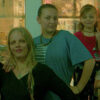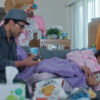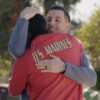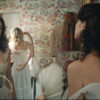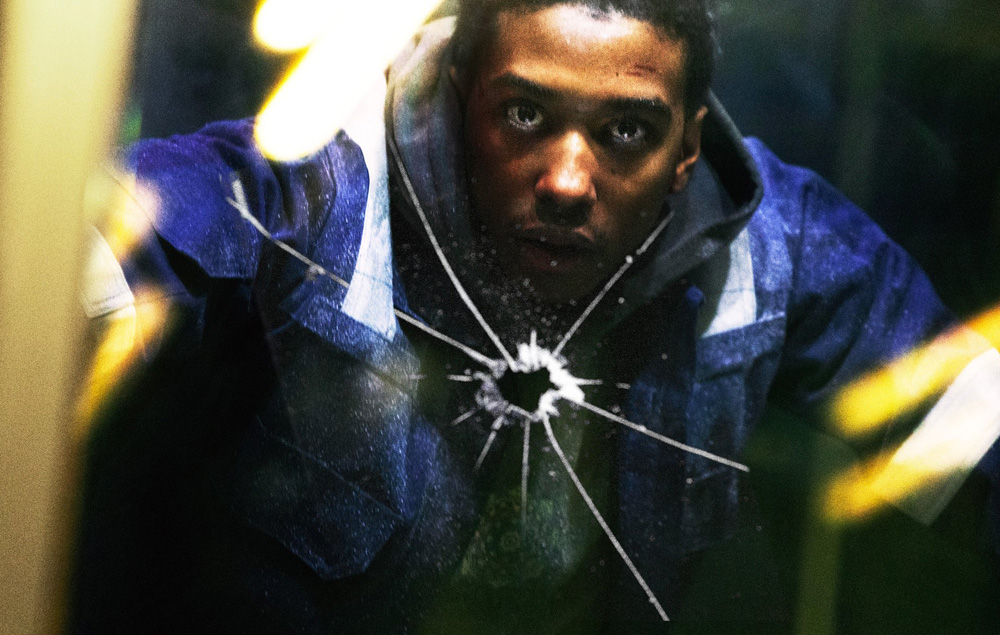“From rock bottom, the only way is up,”someone tells Mady (Jonathan Feltre) in “Night Call,” sitting in the backseat of a car off to who knows where. This isn’t where the locksmith thought he’d be in the middle of the night, answering a call to help a young woman (Natasha Krief) back into her apartment after presumably locking herself out, but he’s ended up in the deepest of holes when he’s been unwittingly enlisted in a robbery, unaware of who’s being robbed or who’s really hired him to do their bidding, only knowing that there’s a ton of money on the line when things go astray that he’s expected to be liable for when at least Yannick (Romain Duris), a crime boss, tries to find out what happened from the only person left alive at the scene of the break-in.
The set-up of Michael Blanchart’s enthralling feature debut is ingenious, but somehow the execution is more impressive. As much of a psychological rollercoaster that Mady goes on, trying to piece together everyone’s motivations and true identities to make it to the morning, the film is a visceral thrill ride of the first order as he locksmith finds himself racing around the streets of Belgium in the midst of a citywide protest against a recent incident of police brutality trying to exonerate himself without enlisting the help of the cops. Following Mady into the darker quarters of the city, pulled around by Yannick’s thugs until he can break away on his own, “Night Call” unspools in unbroken single takes that restore the wonder to the oft-overused practice as it trails its hero down into the underground subway station on bike or pummel his way out of a brothel frequented by hardened criminals. The visuals are dazzling, but so too are the implications of who has to live with the consequences of a society rife with inequalities as Mady shoulders responsibility for a crime he didn’t commit and has to find justice for himself when he’s unlikely to find it in any prevailing system on any side of the law.
With Blanchart now at work on an adaptation of his short “You’re Dead Helene” for Sam Raimi, it seems like only a matter of time before he becomes a household name internationally, but he deserves that status with “Night Call” alone and after turning heads last fall as the film made the festival rounds, it’s heading to theaters this week in the U.S. Recently, the director spoke about how his first feature could surprise him as much as it will audiences to make, realizing that adding its socially conscious elements could make the action even more explosive, and how he pulled off some of the film’s more daring camerawork.
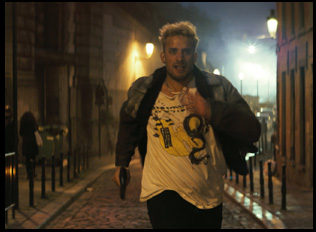
It’s always difficult to answer because it’s so many different things and I always need to have the encounter between a cinematic idea and addressing something that is near to my heart or something more sensitive. I never go in making a movie [thinking], “Okay, I want to address that subject because I have something so interesting to say about it that I need to make a movie.” I don’t make movies [for the] message. I really want it to be a cinematic experience. But once I had an idea of making an action film over one night in Brussels with a locksmith, that was the cinematic object I wanted to make. Then came this idea of talking about violence and police brutality in our society, and the trust that is broken between the law enforcement and the population.
When all of this came together, it wasn’t forced. It just clicked, and the moment I decided to write this movie was when I saw that there was an opportunity to use the codes of the thriller — in this instance, an innocent person who is in the wrong place in the wrong moment — and there is this trope of “why doesn’t he just call the police?” That’s often a question you ask watching those kinds of movies, and I felt like, “Okay, that’s actually a real subject. Do I trust to call the police?” I wanted to have a story and a character where you understand as an audience, in this place I probably wouldn’t call the police either. and maybe it’s a good choice, a bad choice, I’m not judging, but we understand him, and it’s saying something about the current situation. It was just a perfect way of using the tools of cinema and the knowledge that we have of genre, but to put it in service of a subject that is relevant today.
You really feel like you’re a part of the action, particularly in how the camera appears unbound to basic laws of gravity. How did you figure out how to shoot this?
Yeah, I tend to see the camera as another character and in the blocking of a scene, I block the characters and the camera with equal importance. They’re all telling the story together. It’s difficult to choose what the right approach is because I want the movie to be very immersive and at the same time always be with the character and basically be in their point of view. I don’t believe that being in a point of view necessarily means that the camera is him or is just showing what they see or that we need to stay always close to them. It’s finding what in each particular moment, what’s the best way to connect to this character and sometimes that’s ironically to show something that they don’t see.
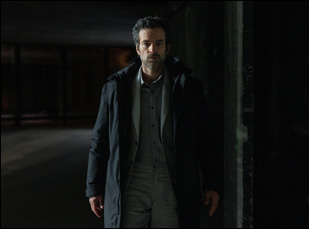
For instance, we had this very ambitious and complex shot going down the subway station with [Mady] on the bike and we could have mounted a camera on the bike itself to be closer to him, but that is not necessarily bringing us closer to his experience. I feel like being behind him, following him in this smooth, uncut shot is bringing us closer to the excitement of the moment and to the urgency of this and seeing clearly where he is, where he’s going, what the obstacles are. I think clarity often brings us closer to the subjective experience of the character instead of just being closer and not seeing anything. I really like the geography, the objective and obstacles to be clear so that we’re invested with the character. At the same time, it’s a very fun and exciting shot, but my motto is always be as generous as possible towards the audience, but stay always sincere and true to what character is living. That’s the rope I’m trying to walk.
You’ve got this incredible actor at the center, Jonathan Feltre. What sold you on him to carry this?
It was a very, very stressful process because I knew the entire movie would rest on the shoulder of whoever we would pick. I didn’t know Jonathan prior to seeing him in tests. I saw him in a short film when we were looking for the perfect actor and I was really impressed by the strength that he could bring just with his presence and his eyes without saying anything. He’s a very intense actor and I met him after almost a year of casting, seeing people in France and in Belgium. We saw almost 100 people and when he arrived, it was so reassuring because when you do the first auditions, it’s the first time that you see an actor or an actress saying the lines that you wrote and more often than not it doesn’t work exactly or you’re disappointed, even though the actor is great. “You’re like, oh shit, this line is bad or we need to rework it.”
But when Jonathan showed up, he was amazing from the start. Suddenly I was like, “This very difficult scene that I wrote can work because he gets it. The emotion and the intention is there.” It was just such a blessing to find him and that’s why we chose him particularly — he could both feel very sensitive and fragile in some way. Jonathan is someone who’s really open to showing his fragility and being close to his emotions, but then when it’s needed he also can be very strong and powerful. I needed that for the evolution of the characters, going from someone sweet and sensitive and that we immediately feel empathy for, but then by the end of the movie he finds this survival instinct and this urge to for once in his life do something that he feels is the right thing to do instead of just listening to others and do what he’s told. By the end, we see that he is a very strong and capable human being, with strong conviction and when he looks at you with this look of determination, he can be very intimidating, so we needed that whole palette of it.
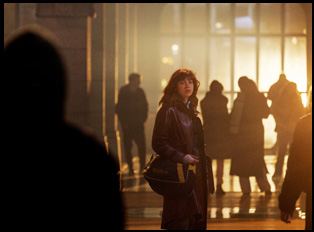
The shooting was a bit tough, but every day [was like that] because we were just running out of time all the time. We had to shoot a lot of different [camera] setups and scenes in a really short amount of time, so that made it very difficult. But otherwise [that brothel] was really one of the sets that was the most fun to prep and to imagine the choreography [for] and to plan out the shots. What was tough is we found that house really late into the preparation. We initially prepared for another house and it didn’t work out. We didn’t have the permits. So we had to find another place and the art department worked really fast to create this world [where we had to] be very specific on what we’re going to show and what we’re not going to show because we couldn’t waste any money and we were very limited in what we can do, We were very precise on how we’re going to shoot it. And it was just so fun reimagining the script in this house and in this layout and play with the different levels and the geography of that place. We had a very short amount of time, but it wasn’t the most difficult thing to construct.
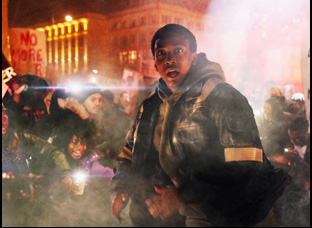
Yeah, it’s funny. I thought naively that making a feature was just making a short but longer and it would be more tiring and more intense, but about the same. I was surprised to discover that it’s totally different beast altogether. It’s a totally different way of working because when you do a short, because it’s just one or two week shoot tops, everything is ready when you start. You’ve rehearsed every scene, you’ve tested every effect, you’ve seen every set, every costume, every accessory. Everything has been validated and you go into shooting exactly what you’re going to do each day and everything’s there. But just because it’s so much longer — we had eight weeks of shooting [on “Night Call”] — a lot of the sets and the costumes and the effects and all of that stuff is gonna be made during the shooting in parallel [with the production]. So it felt like jumping of a mountain, hoping that my wings would grow during the fall. That was very different to me, having to think about everything that wasn’t ready yet, and then you learn, “This is not gonna be ready in time. You need to reinvent that scene.” It was mentally much more challenging than making a short, and I wasn’t totally aware of that.
“Night Call” opens on January 17th at Alamo Drafthouses across the country and will be available on VOD.
